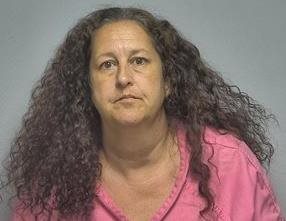Vocal students at Murray State University are being given a special look at their instruments thanks to the Voice and Swallowing Research Clinic on campus. Faculty from the Center for Communication Disorders and the department of music have collaborated to provide students with a personal assessment of their vocal health via the use of a videostroboscopy unit.
The procedure allows a clinician to view vocal folds in motion by using a rigid scope placed in the patient's mouth or a flexible scope, which is passed through the nose and may also be used to image and evaluate swallow function. The exam is recorded and can be played in slow motion in order to analyze vocal structures and their functions.
According to Alison Brown, “[Participants] can even have a printed picture of the vocal folds to hang on their refrigerator!”
Brown is both a lecturer of CDI undergraduate courses and a clinical supervisor for graduate students studying speech-language pathology. She regularly offers guidance to graduate students as they provide therapy through Murray State's Voice and Swallowing Research Clinic, a specialty facility within the overall Speech and Hearing Clinic.
“Joining forces with music faculty is natural since we both understand the anatomy and physiology of the vocal mechanism,” explains Brown. “It is a nice pairing of science and art.”
Participating students receive a newfound understanding by being able to accurately visualize their own vocal anatomies and measure the health of their instruments. Dr. Maribeth Crawford, assistant professor of music, accompanies the students from her studio in order to help them evaluate individual vocal anatomy as it relates to vocal performance.
When asked her favorite aspect of working in the clinic, Brown quickly answered, “Nothing compares to seeing a vocalist's face when they see their instrument for the first time!”
This partnership is beneficial for not only the vocal students but those studying speech-language pathology as well. Aside from getting to collaborate with individuals from other disciplines, such as music faculty and vocalists, CDI graduate students have the opportunity to learn all aspects of voice assessment, including acoustic analysis of the voice and using videostroboscopy. Having a state-of-the-art digital videostroboscopy unit is not common, even in the offices of ENT (ear, nose and throat) doctors, making this an even more impressive clinical experience for students.
According to Brown, “It is crucial for high-risk populations, such as professional voice users (which includes teachers, TV and radio personalities, actors and singers), to be aware of their vocal health since their livelihood is dependent on clear, reliable voice.”
Vocal nodules and polyps, and benign growths due to vocal overuse or abuse, respond well to voice therapy. In addition to having their vocal folds imaged, those who smoke should visit an ENT doctor regularly. Early screenings can identify potentially cancerous lesions.
The Speech and Hearing Clinic at Murray State provides quality assessment and intervention for clients of all ages across the region, including individuals with a variety of speech, language, hearing and swallowing disorders. Murray State faculty, staff, students and their dependents are not charged for diagnostic or therapeutic services. All others will be assessed on a sliding payment scale. Those interested in an evaluation or therapy services may contact the clinic at 270-809-2446.
Advertisement
Vocal Students at MSU go High Tech to See Voice
Advertisement
Latest Education
Education
Apr. 13, 2021
Education
Aug. 18, 2020
Education
Aug. 17, 2020
Education
Aug. 17, 2020
Education
Aug. 15, 2020
ADVERTISEMENT
Most Read >
ADVERTISEMENT
Latest Education
Education
Apr. 13, 2021
Education
Aug. 18, 2020
Education
Aug. 17, 2020
Education
Aug. 17, 2020
Education
Aug. 15, 2020
Advertisement
ADVERTISEMENT





